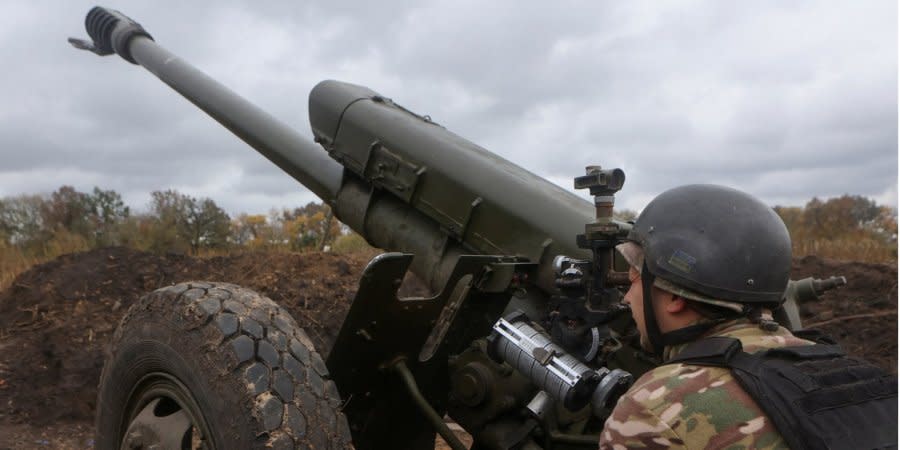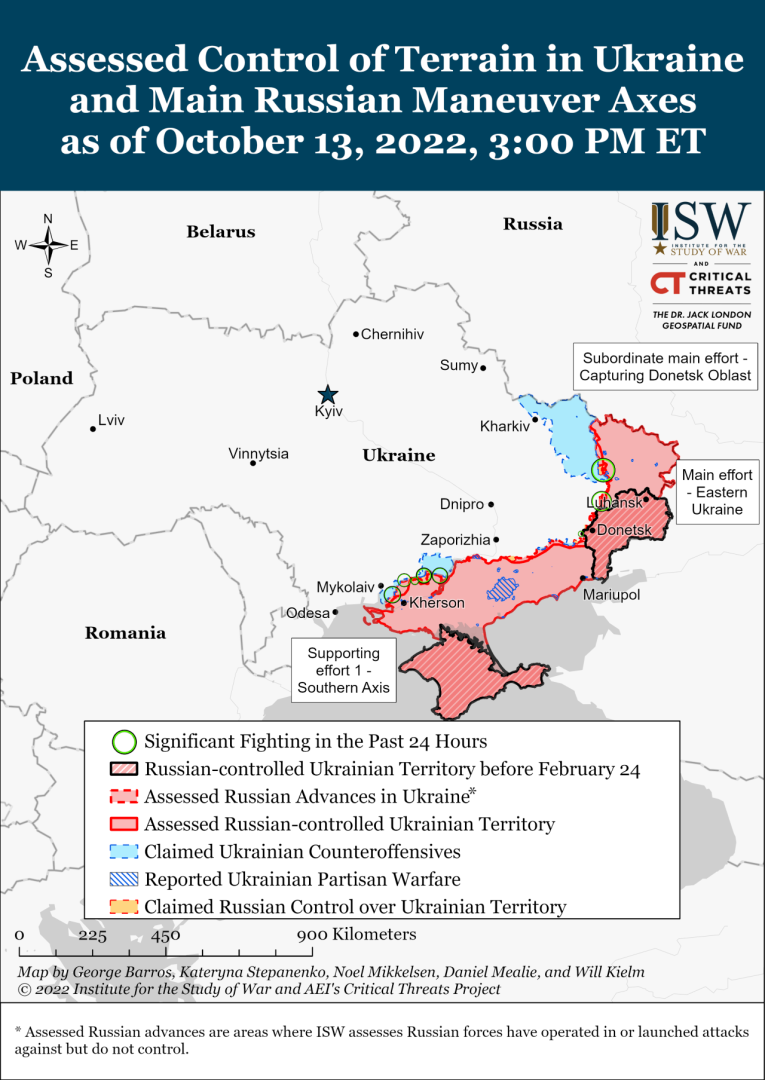Ukrainian army advances to Svatove as criticism of mobilization in Russia mounts – ISW

ISW analysts based their conclusions on reports by the Ukrainian General Staff that, “particularly in Donetsk Oblast, certain Russian units are receiving orders from commanders to temporarily halt offensive operations due to extremely low morale, psychological conditions, high rates of desertion, and the non-execution of combat orders.”
“The General Staff statement is likely a reflection of the fact that Russian detachments are becoming increasingly degraded as they impale themselves on relatively small and insignificant settlements throughout Donetsk Oblast, especially around Bakhmut and the Donetsk City area,” ISW said.
“As these units become more degraded, they are likely reconstituted ad hoc with disparate combat elements, which leads to further demoralization and incoherence in the conduct of offensive operations.”
Read also: Liberation of Kherson ‘a matter of time’ says Israeli military expert
“However, the apparent suspension of offensive operations in areas of Donetsk Oblast, nearly the only areas in Ukraine where Russian troops are engaged in offensive operations, will further complicate Russian efforts to take additional territory and likely further contribute to poor morale and overall attrition of combat capabilities.”
The Armed Forces of Ukraine have likely moved forward in the directions north and east of Svatove of Luhansk Oblast.
On geolocated video posted on Oct. 13, Ukrainian troops can be seen capturing Russian soldiers who voluntarily surrendered near the N26 highway in Krokhmalne, about 20 kilometers northwest of Svatove. The footage likely indicates that Ukrainian troops have also taken control of the surrounding settlements of Pischane, Berestove, and Tabaivka. According to Russian open sources, Ukrainian troops conducted ground attacks further north of Krokhmalne and attempted to attack Orlyanka and Kotlyarivka, both within 30 kilometers northwest of Svatove.
Public reports of the first deaths of ill-prepared mobilized Russian troops in Ukraine have sparked renewed criticism of the Russian military command.
Russian media reported that five mobilized men from Chelyabinsk have already died in combat in Ukraine just three weeks after Russian dictator Vladimir Putin’s declaration of partial mobilization on Sept. 21. The report led many Russian pro-war milbloggers to claim that the number of dead and wounded among mobilized servicemen is likely higher than this due to lack of promised training, equipment, unit cohesion, and commanders, as well as repeated instances of wrongful mobilization. One of those Russian milbloggers complained on Oct. 13 that newly mobilized men are being deployed in a haphazard way that will lead to 10,000 deaths and 40,000 injuries among them by February 2023.
Read also: Ukrainian army repels enemy attacks in Donetsk and Kherson sections of front – General Staff
ISW said it cannot independently verify such claims, but the Russian pro-war community has been proactive in highlighting the mobilization since the day of its announcement by Putin, hoping it would improve the prospects of the Russian war against Ukraine. “Constant complaints in these circles about lack of equipment and deployment to the front lines without proper training corroborate ISW’s assessments that the mobilization campaign will not produce enough combat-ready Russian personnel to affect the course of the war in the short term,” ISW said.
The Kremlin continues to struggle to message itself out of the reality of mobilization and military failures.
This in part explains the recent campaign of missile strikes on Ukraine’s territory. However, “renewed milblogger critiques about mobilization again show how ephemeral the Kremlin’s successes are at deflecting attention from them,” ISW experts say.
Russian forces are likely continuing to use Iranian Shahed-136 drones to support massive strike campaigns against critical Ukrainian infrastructure due to their low efficacy in active combat situations.
The spokesperson for Ukraine’s Southern Operational Command, Natalia Humenyuk, claimed on Oct. 13 that Russian forces are employing Shahed-136 drones primarily to strike buildings and infrastructure because the drones have limited efficacy against troop concentrations. This supports ISW’s previous assessment the use of the Iranian drones in such a manner will not generate asymmetric effects for Russian forces “because they are not being used to strike areas of critical military significance in a way that directly influences the frontline.”
Wagner Group financier Yevgeny Prigozhin is likely continuing efforts to distinguish himself and Wagner Group forces from more conventional Russian and proxy troops.
The statement he made on Oct. 13 that Wagner Group forces allegedly single handedly took control of Ivanhrad, a settlement just south of Bakhmut (which contradicts to statements of the Donetsk and Luhansk puppet administrations), points to such assumption. It is consistent with ISW’s previous observations that Prigozhin is “jockeying for more prominence against the backdrop of his recent harsh criticism of the Russian Ministry of Defense.”
Key Conclusions:
Russian forces continued to launch strikes on critical Ukrainian infrastructure on Oct. 13;
Russian forces are continuing defensive operations in anticipation of potential Ukrainian attacks towards Kreminna;
Ukrainian and Russian sources stated that Russian troops are attempting to recapture positions in northern and northwestern Kherson Oblast;
Damage to the Kerch Strait Bridge continues to impede the movement of Russian supplies and personnel to southern Ukraine;
Russian forces continued ground attacks in Donetsk Oblast and claimed to make marginal advances south of Bakhmut;
Increasingly degraded morale, discipline, and combat capabilities among Russian troops in combat zones in Ukraine may be leading to temporary suspensions in offensive operations in limited areas;
Russian officials are likely increasingly limiting freedom of movement in Russia to preserve additional mobilizable populations and prevent them from fleeing the country;
Russian occupation officials called for the evacuation of civilians from occupied Kherson Oblast.

Read the original article on The New Voice of Ukraine

